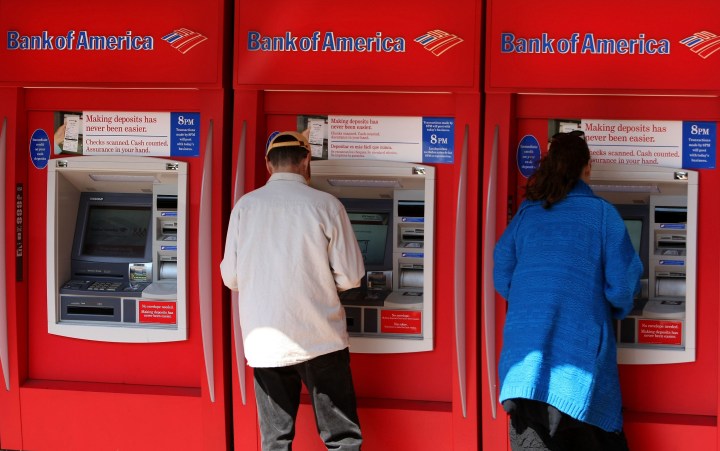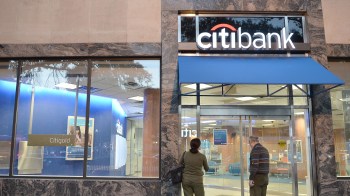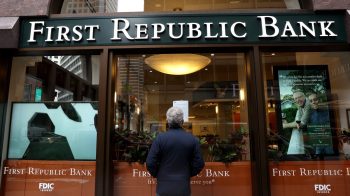
If money doesn’t grow on trees, then why do banks have “branches”?
Share Now on:
If money doesn’t grow on trees, then why do banks have “branches”?

This is just one of the stories from our “I’ve Always Wondered” series, where we tackle all of your questions about the world of business, no matter how big or small. Ever wondered if recycling is worth it? Or how store brands stack up against name brands? Check out more from the series here.
Listener Chris White from Columbus, Ohio, asks:
Why are bank locations called “branches”? Do any other businesses use that term?
The government. Libraries. The YMCA. Dunder Mifflin Paper Company, Inc. (from “The Office”).
Beyond banks, many organizations and institutions use the term “branch.” It’s commonly used by entities that have operations outside their headquarters.
Peter Sokolowski, editor at large for Merriam-Webster, told Marketplace over email that “branch” entered English from the French in the 13th century.
“Branch went from the literal tree sense to derivatives meaning a small offshoot of a larger main body or source (branch of a road or river), to more figurative uses indicating a smaller part of a larger or original thing, like branch of a family, branch of a discipline and finally branch of an office such as a bank,” Sokolowski explained.
There are references to bank “branches” dating back centuries. A volume of The Scots magazine from 1775, for example, makes reference to “a branch of the bank of Scotland.”
But, we might take the idea of banks having numerous convenient branches for granted. Charles Calomiris, a professor at Columbia Business School, pointed out that the U.S. has actually been hostile to bank branching for much of its history. It wasn’t until 1997 that national banks were allowed to open branches across state lines without restriction. Borrowers feared the possibility that banks would stop lending to them, while smaller banks opposed the competition.
Parts of the U.S. hated the idea of bank branching
In the 19th and 20th centuries, bank branching stirred political controversy, said Calomiris, who co-authored the book “Fragile by Design: The Political Origins of Banking Crises and Scarce Credit” with Stephen Haber.
Nationally chartered banks were barred from opening branches until the 1920s. Branch laws for state banks varied by area, with some states allowing these banks to have their own branches and some prohibiting them.
Calomiris explained that three-time Democratic presidential nominee William Jennings Bryan wanted to preserve restrictions on bank branching and made that one of the three main platform points in his 1896 campaign. (He lost to Republican William McKinley.)
There are certainly downsides to the prohibition. For instance, if you’re a banker in, say, Urbana, Illinois, and the regional economy relies on crops like corn and soybeans, your portfolio isn’t well-diversified, Calomiris said.
Opening new banks is also more expensive than opening new branches, since a branch can use resources from its headquarters.
Banks with branches can “reap economies of scale by spreading [their] overhead costs for expensive information technology and high-salaried personnel across a larger asset base,” Calomiris and Haber wrote in their book.
Because of the cost, it’s unlikely that many banks will establish themselves in the region, which then means they aren’t competing to offer better services to consumers.
“If you’re in Urbana, Illinois, you’re only gonna have access to a couple bankers. They’re all having to charge a lot for their loans because they’re maintaining a very undiversified portfolio, and they have a lot of overhead and they don’t have a lot of competition,” Calomiris explained.
Yet in the 1920s, Illinois had a statewide referendum on whether to allow bank branching. It was defeated. “It’s precisely the agricultural areas, not the cities, that support the limitation,” Calomiris said.
Why? Let’s say back in the 1800s or early 1900s, you were a middle-income, landowning farmer. “You liked the idea of having your banker be a bank that didn’t operate all over the country, but that only operated in your local area,” Calomiris said.
Yes, you’re going to have to pay more for credit. But branching poses an issue too. Bankers could decide to terminate your soybean credit when the price of the crop falls. Instead, they could fund farmers in other areas where the bank has a presence.
If the bank was limited to your neck of the woods, “you’re sort of buying some credit insurance for bad times when the banker is stuck rolling over your loan and allowing you to continue to borrow instead of cutting you off,” Calomiris said. “So it’s a kind of access to a credit insurance policy.”
Banks branch out
In 1927, the McFadden Act allowed national banks to have branches “to the extent permitted by state governments for state banks in each state,” according to FederalReserveHistory.org.
As banks started failing in the 1920s, people opened up to the idea of allowing other banks to enter their area, Calomiris explained.
But there were still limitations to the McFadden Act. If your state did not allow bank branching, national banks had to stay away, Federal Reserve History explained.
Fast-forward decades later to the 1980s, and the country has another series of bank failures on its hands. More than 1,600 banks backed by the Federal Deposit Insurance Corp. shut down or received FDIC financial assistance between 1980 and 1994, according to the agency.
Some states’ rules were relaxed, allowing out-of-state banks to acquire those that were failing. As a logical consequence, Calomiris said, some of the big banks argued: “You know what, why not just allow us to operate as nationwide franchises?”
Then came the Riegle-Neal Interstate Banking and Branching Efficiency Act of 1994. It allowed banks that were “well-managed and well-capitalized” to acquire banks in any state and convert their subsidiaries into bank branches.
Fast-forward again, and the concept of branches faces another threat: technology. There were nearly 100,000 bank branches in 2009, which has dropped to 80,000. Banks are now betting on online platforms.
Special thanks for research assistance provided by Gerald Cohen, a professor at Missouri University of Science and Technology, and respondents on the American Dialect Society’s listserv, including Dan Goncharoff.
There’s a lot happening in the world. Through it all, Marketplace is here for you.
You rely on Marketplace to break down the world’s events and tell you how it affects you in a fact-based, approachable way. We rely on your financial support to keep making that possible.
Your donation today powers the independent journalism that you rely on. For just $5/month, you can help sustain Marketplace so we can keep reporting on the things that matter to you.


















